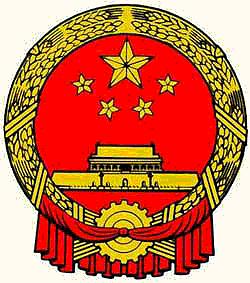China
China (locally known as 中国-Zhongguo (Mandarin: The Middle Kingdom)) is an eastern Eurasian civilization. China is notable for having a major influence on surrounding civilizations in Eastern Asia and being the oldest continuous nation on Earth, existing as as a political entity in some form or another more or less consistently since 221 BCE, after being unified by Emperor Qin Shi Huangdi despite the rise and fall of various dynasties. Between 476 and 1600, Chinese civilization was the most technologically advanced civilization on earth, having developed chemical explosives, movable type printing, the compass, civil service examinations, paper and Paper Money well before european civilization did. The most recent incarnation of China is the People's Republic of China, a Communist Regieme founded by Mao Zedong in 1949 which is rising power undergoing massive economic growth.
Periods in Chinese History
- Various neolithic and bronze age agricultural cultures starting around 8000BCE, the first major Chinese cultivar is millet.
- Xia Dynasty (2070 BCE to 1600 BCE) Bronze age civilization which is mostly legendary.
- Shang Dynasty (1600 BCE to 1046BCE): Loose theocratic hegemony, first examples of readable written Chinese language.
- Zhou Dynasty (1046 BCE to 475 BCE): Loose feudal society, created concept of Mandate of Heaven. Power gradually weakened over time. Beginning of the iron age.
- Warring States Period (475 BCE to 221 BCE): Zhou State fails, china divided into several armed camps based around old Zhou feudal territories, emergence of Confucianism, Daoism and Legalism.
- Qin Dynasty (221 BCE to 207 BCE): China unified under the banner of Qin, Qin Shi Huangdi creates a Legalist centralized state notable for major projects (the Great Wall being the most notable), standardization of written language, destruction of information and scholars who were against imperial ideology and brutal punishments. Fell to Rebellion but started the Dynastic Cycle.
- Han Dynasty (207 BCE to 220 CE): Long lived Dynasty, less brutal than the Qin but still centralized. Eventually adopted Confucianism as the state ideology. Paper and blast furnace developed.
- Three Kingdoms (220 to 280) Han State divides into three dynasties that fight for dominance, Shu, Wei and Wu.
- Jin Dyansty (280 to 420): Order Re-established, Buddhism appears in China.
- Northern and Southern Dynasties (420 to 589) China divided between the Northern and Southern states
- Sui Dynasty (589 to 618) China is reunified, introduction of the Imperial Civil Service Examination
- Tang Dynasty (618 to 907): Creation of the Grand Canals and the rise of Buddhism.
- Song Dynasty (960 to 1279): Development of gunpowder and movable type printing. Large scale urbanization happens. China gets involved in maritime trade in the Indian Ocean.
- Yuan Dynasty: (1279 to 1368): China is conquered by the mongols under Ghengis Khan. Mongol rulers are assimilated into Chinese culture quickly. China recovers from the loss of a third of its population.
- Ming Dynasty (1368 to 1644): Mongol rule ends after a rebellion. Despite exploration early on (led by Admiral Zheng He), this is abandoned leading to active isolationism. To obtain Chinese goods foreign Traders must come to China. Emergence of Neo Confucianism as the official ideology. Regular maritime trade with Europeans begins, as does technological stagnation. The Ming government makes silver the currency after the failure of paper money due to mongol inflation.
- Manchu Dynasty: (1644 to 1917) Last Imperial Dynasty. The nomadic manchu people move into china from the Northeast. China is overtaken by Enlightenment and Industrial era Europeans militarily and economically. Corruption in the Bureaucracy and incompetency from the throne leads to the decay of infrastructure and economic instability, made all the worse by Europeans using superior military technology to force china open and impose unfair treaties on China. A few small scale attempts to industrialize fail, eventually leading to the collapse of the Imperial government.
- Koumintang (1917 to 1949): Nationalist government founded after the abolition of the Imperial Government, theoretically on Democratic principles, but did not function as such and has little influence. Much of the country descends into warlordism and is devastated by the Japanese invasion.
- People's Republic of China (1949 onward): Communist regime started by Mao Zedong who ruled using radical economic policies with some major failures (Great Leap Forward and the Cultural Revolution). After Mao's death the Chinese Communist Party swiched to a largely market economy that has been growing rapidly.
Chinese People of Note
- Sun Tzu: General and Military Thinker
- Confucius: Moral Philosopher who's teachings became official ideology in china for over 2,000 years
- Emperor Qin Shi Huangdi: China's first Emperor.
- Emperor Yang of Sui: Introduced the Imperial Examination system
- Zheng He: Ming Dynasty explorer.
- Sun Yat-sen
- Jiǎng Zhōngzhèn
- Mao Zedong
- Hu Jintao: Paramount Leader of the People's Republic
- Xi Jinping: Paramount Leader of the People's Republic
- Yang Liwei: First Chinese Astronaut.
China in Science Fiction
- In Stargate, the People's Republic of China contributes to the Stargate program, including having a starship under it's control (the PLA Sun Tzu).
- In Firefly, Human Civilization has adopted a large degree of Chinese influences, notably having Chinese writing sharing an equal status with the Roman Alphabet
